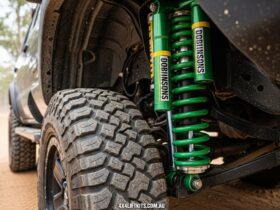Are you tired of high energy bills and uncomfortable indoor temperatures? Do you want to save money and reduce your environmental impact without sacrificing comfort? If so, it’s time to take a closer look at your heating and cooling system. In this article, we’ll explore various energy-efficient heating and cooling options that can help you save money and energy while maintaining a comfortable home. We’ll also discuss the importance of proper installation, maintenance, and insulation to maximize your system’s efficiency.
Understanding Heating and Cooling Systems

Heating and cooling systems, also known as HVAC (heating, ventilation, and air conditioning) systems, are responsible for maintaining comfortable indoor temperatures and air quality in your home. Traditional HVAC systems use a furnace to heat your home and an air conditioner to cool it. These systems can be inefficient and costly to operate, especially if they are outdated or poorly maintained.
Energy-efficient heating and cooling systems can significantly reduce your energy consumption and utility bills while providing the same level of comfort. These systems often use advanced technology and innovative designs to minimize energy waste and maximize performance.
Energy-Efficient Heating and Cooling Options
Heat Pumps
Heat pumps are a highly efficient alternative to traditional furnaces and air conditioners. They work by transferring heat between the inside and outside of your home, rather than generating heat like a furnace. This makes them more energy-efficient and cost-effective, especially in moderate climates.
There are several types of heat pumps, including air-source, ground-source, and water-source. Air-source heat pumps are the most common and use the outdoor air as a heat source or heat sink. Ground-source (also known as geothermal) and water-source heat pumps use the stable temperatures of the ground or a body of water to provide heating and cooling.
Geothermal Systems
Geothermal systems, also known as ground-source heat pumps, use the constant temperature of the earth to heat and cool your home. These systems are highly efficient and can save you up to 70% on your heating and cooling costs. They work by circulating a fluid through underground pipes, which absorbs heat from the ground in the winter and transfers it to your home. In the summer, the process is reversed, and the system cools your home by transferring heat back into the ground.
While geothermal systems have a higher upfront cost, they have a long lifespan and low operating costs, making them an excellent long-term investment.
Ductless Mini-Split Systems
Ductless mini-split systems are another energy-efficient heating and cooling option, especially for homes without existing ductwork. These systems consist of an outdoor compressor unit and one or more indoor air-handling units, connected by a small conduit. Each indoor unit can be controlled independently, allowing you to customize the temperature in different rooms or zones.
Ductless mini-split systems are highly efficient, as they avoid the energy losses associated with ductwork. They can also improve indoor air quality, as they do not circulate dust and allergens through ducts.
Maximizing Efficiency with Programmable Thermostats
Programmable thermostats are a simple and affordable way to increase the efficiency of your heating and cooling system. These devices allow you to set different temperature schedules for different times of day or days of the week. By automatically adjusting the temperature based on your schedule, programmable thermostats can help you save energy and money without sacrificing comfort.
Some programmable thermostats also offer smart features, such as remote control through a smartphone app or integration with home automation systems. These advanced features can further enhance your system’s efficiency and convenience.
The Importance of Air Sealing and Insulation
Proper air sealing and insulation are essential for maximizing the efficiency of your heating and cooling system. Air leaks and inadequate insulation can cause your system to work harder, using more energy and resulting in higher utility bills.
Sealing air leaks in your home’s envelope (the outer walls, windows, and doors) can significantly reduce energy waste and improve comfort. Common air leak locations include gaps around windows and doors, electrical outlets, and plumbing penetrations. Insulation should be installed in your home’s walls, attic, and crawlspaces to minimize heat transfer between the indoors and outdoors.
Regular Maintenance for Peak Performance
Regular maintenance is crucial for ensuring the efficiency and longevity of your heating and cooling system. Routine maintenance tasks include cleaning or replacing air filters, inspecting and cleaning ductwork, and checking refrigerant levels. It’s also essential to schedule professional maintenance at least once a year, during which a technician will inspect, clean, and tune your system to ensure optimal performance.
Conclusion:
Investing in an energy-efficient heating and cooling system can significantly reduce your energy consumption, utility bills, and environmental impact. By exploring the options discussed in this article, such as heat pumps, geothermal systems, and ductless mini-split systems, you can find the best solution for your home and budget.
Remember that proper installation, maintenance, and insulation are essential for maximizing the efficiency of your system. By taking these factors into account, you can enjoy a comfortable home while saving money and energy.









Find Us on Socials